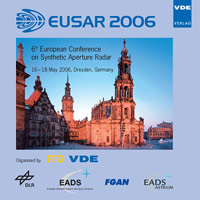Antarctic SAR and INSAR calibration experiment during the International Polar Year
Konferenz: EUSAR 2006 - 6th European Conference on Synthetic Aperture Radar
16.05.2006 - 18.05.2006 in Dresden, Germany
Tagungsband: EUSAR 2006
Seiten: 3Sprache: EnglischTyp: PDF
Persönliche VDE-Mitglieder erhalten auf diesen Artikel 10% Rabatt
Autoren:
Legrésy, Benoît; Rémy, Frédérique (CNRS/LEGOS Toulouse, France)
Rosich, Betlem; Caspar, Christophe (ESA/ESRIN Frascati, Italy)
Lopez, Jean-Marc; Souyris, Jean-Claude (CNES Toulouse France)
Frezzotti, Massimo (ENEA, Casaccia Roma, Italy)
Inhalt:
The ERS INSAR tandem mission brought enormous new knowledge on the ice dynamics and in particular in Antarctica. Fast flowing ice streams and outlet glaciers were much better understood. The main purpose of INSAR on the ice is to measure surface velocity, topography and ice ocean interaction. ENVISAT and other single satellite SAR satellites, though limited by the 35d (instead of 1 or 3 d with ERS1 or tandem) to observe fast flowing parts of the ice cap, offer opportunities to concentrate on inland much slower ice flow. The surface velocity reveals the dynamic state of the ice, the beginning of ice streaming, the flow boundary conditions changes like the presence of subglacial lakes, bedrock hills and mountains. Getting to know accurate velocity field at particular places like deep ice core drilling sites or regions of particular ice configuration like domes, saddles, convergence, divergence, ice divide ... is of particular interest. On the Antarctic plateau, the topography is relatively smooth and well known, the atmosphere is quite clear and interferometry works relatively well. However, the ice caps compounds very few rocky fixed outcrops to tie the SAR images and interferogramms and the large scale smooth ice flow frequently show ramps of parallel fringes which would be interpreted as residual orbit fringes in other land applications. This lack of tie points is the main limitation to accurate velocity measurement. The international polar year will bring a good opportunity with the TASTE-IDEA traverses which will follow the East Antarctic Ice Divide. This is a unique opportunity to disseminate tie points available at the top of the ice cap where they are so cruelly missing. We designed a SAR corner reflector network to take advantage of the traverse. This traverse has the advantage to give central sites on the ice cap which we also chose to be around sites of glaciological interest. It is very small accumulation and little windy positions so that the reflectors should be visible during a life time which we expect to be around 20 years. The main difficulty is to cope with the high backscatter of the area and with the difficulty to position accurately the reflector in a snow full area. A first reflector has been sent to Tallos Dome and install for the 2005-2006 season and is being tested. We will show the design of the network, of the SAR reflector and the main ideas of the project and the first images and discuss on the capabilities of the future network.


